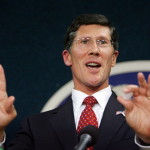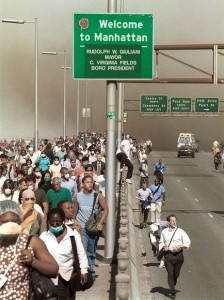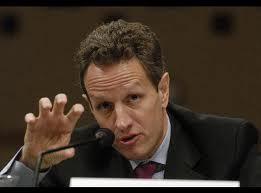You gotta love these guys.
Two phrases came to mind when I read the headline today about CIT Group taking over OneWest Bank.
First: “History does not repeat itself, but it certainly does rhyme.”
And
Second: “Madness consists of doing the same thing over and over again and expecting a different result.”
The casual reader of financial headlines will neither recognize nor care about this acquisition by a middle-market business lender (CIT Group) of a California retail branch banking institution (OneWest).
But it’s not the relatively anonymous companies that matter, but rather the people behind the takeover, and the historical provenance of the companies, that matters. This acquisition involves some of the key chess pieces of the 2008 Crisis and the worst excesses of that time. Let me go through some of the key names and highlights.
OneWest Bank – This is really IndyMac bank with a new name.
“A rose, by any other name, would smell as sweet.”
You haven’t heard of IndyMac?
IndyMAC was kind of a ground zero mortgage lender in the 2007/2008 time period. Before failing, it was the seventh largest mortgage originator in the United States, and when it was taken over by the FDIC in July 2008 it was the fourth largest bank failure in history.
Of course it was originally founded by the later notorious Countrywide founder Angelo Mozilo, who spun off IndyMac as an independent company in 1997.
IndyMac did the usual thing as everyone else, borrowing with short-term debt, and lending out in the form of illiquid dicey mortgages.
IndyMac in particular was a leader in the intermediate “Alt-A” mortgage lending segment – mortgages too risky to be considered ‘Prime,’ but not entirely as shaky as Sub-prime either.
OneWest Bank became a newly formed bank in March 2009 when it took over the remains of IndyMac, via an FDIC auction of the failed mortgage lender.
Leading up to this transaction, the CEO of OneWest is Steve Mnuchin, a former Goldman Sachs partner and member of the management committee.
Prior to taking over OneWest, Mnuchin led Dune Capital with other Goldman partners who had made their reputations and fortunes investing in the distressed assets of the Resolution Trust Corporation, the government’s response to the Savings and Loan Crisis of the 1980s.
CIT Group – In February 2008, this lending company rang the New York Stock Exchange opening bell to celebrate its 100 years of existence. By April 2008 the company was reeling from losses, ceased its student loan lending, and subsequently its home-loan lending by the summer 2008. With billions in shareholder value destroyed, the company declared bankruptcy in 2009. In January 2010. CIT hired John Thain as Chairman and Chief Executive.
John Thain – Once heir-apparent to the CEO position at Goldman Sachs under Hank Paulson, Thain left Goldman in 2004 to run the New York Stock Exchange when current Goldman CEO Lloyd Blankfein got the clear nod to succeed Paulson. Thain took over the leadership of Merrill Lynch in late 2007, after Stanley O’Neal did his best to drive the old bull straight into a financial ditch through self-inflicted subprime CDO wounds, leading to a $8.4 Billion write-down.
Thain – to his credit – quickly raised $6 billion capital from the Singapore sovereign national fund, only to have to oversee close to another $10 Billion in write-downs in his first half year on the job.
By the Summer of 2008, Thain was forced to market Merrill’s toxic CDOs, offering them to – among others – Steve Mnuchin at Dune Capital, before selling them to Lone Star Capital at a severe discount.
With Merrill reeling by the end of 2008 – and with by then a total of close to $50 Billion in sub-prime mortgage CDO-related write-downs, Thain managed to sell Merrill to the only CEO who actually performed worse than O’Neal throughout the crisis, Ken Lewis from Bank of America.
Criticism of Thain
Thain subsequently was criticized for:
a) Spending 1.2 million to decorate his executive suite, including his famous $1,000+ gold-plated wastebasket
b) Requesting a $10 million personal bonus from the Merrill Lynch board for saving all of their collective bacon, and
c) Paying out $4 Billion in bonuses to Merrill Lynch executives, just prior to the Bank of America takeover in January 2009, after the firm received $25 Billion in a direct US Treasury infusion of taxpayer money in October 2008.
All of which are fair grounds for accusing him of a touch of, shall we say, hubris. But from Merrill Lynch’s narrow perspective, John Thain was a motherflipping genius.
Thain is a genius, of a sort
Thain’s simultaneous saving of the venerable Merrill Lynch, and fleecing of Lewis and Bank of America’s shareholders in the midst of a financial meltdown is the single greatest sales job ever performed in financial circles.
Seriously. Ever.
But here’s the key point that links this financial history to Thain’s pursuit by CIT of OneWest Bank:
This greatest-sales-job-ever all would have been impossible if Thain’s former boss Treasury Secretary Hank Paulson had not guaranteed a $20 Billion sweetener for Ken Lewis to consummate the deal in January 2009.
Lewis apparently woke up from whatever drunken stupor had led him to acquire first Countrywide, and then Merrill Lynch, and Lewis tried to back out of the deal between December 2008 and January 2009.
Secretary Paulson ponied up $20 Billion in taxpayer first-loss money and jammed the deal through. Paulson could not afford, in the midst of the crisis (as well as Presidential transition) to have Merrill Lynch dropped by Bank of America, and very likely, bankrupted.
Some other relevant facts
Also, coincidentally, his direct protégé from his Goldman CEO days ran Merrill Lynch at the time. Anyway. Not completely off-point, Thain reportedly earned $83.1 million from Merrill Lynch during his service from December 2007 to January 2009. Anyway.
Thain was a hero for Merrill in December 2008, but crucially could not have pulled off his magic trick had Merrill not been Too Big To Fail. And THAT, my friends, is what this CIT takeover is about.
And Thain has said that as plainly as possible.
CIT, under Thain, wants desperately to be Too Big To Fail
In recent months Thain has talked about whether CIT would pursue a bank acquisition. The additional safe deposits would be nice for CIT, Thain has said, but the key to CIT’s next purchase would be to get well above the threshold of $50 Billion in assets. Why does that matter? Because $50 Billion is currently the cutoff for becoming a “systemically important financial institution, or SIFI.
As the Wall Street Journal reports
On a conference call, Mr. Thain said he believes CIT is ‘well-positioned to satisfy all of the criterion or being a SIFI institution.
And as the Wall Street Journal further reports,
The takeover of IMB Holdco LLC, which is OneWest’s parent company, will bump CIT’s assets up to $67 billion, making the bank large enough to be considered ‘systemically important’ by regulators. CIT, a lender to small and medium-size businesses, had $44.15 billion in assets as of June 30.
SIFI, by the way, is what we now call Too Big To Fail institutions.
Ironically, becoming a SIFI should be considered a disadvantage, because it involves additional layers of regulatory scrutiny. In a normal, pro-business, capitalist financial system, we would expect that becoming a “SIFI” would be a “NoNo” for any bank.
Since 2009, regulators from the FDIC, SEC, Federal Reserve, CFTC (and any number of other acronymic bureaucracies) have been struggling with how to deal with Too-Big-To-Fail financial institutions.
Their answer: More regulations, more ‘living will’ requirements, more stress tests, more disclosures, more restrictions on proprietary trading, more capital requirements.
You’d think that any growing financial institution would run for its life, away from this type of bureaucratic morass.
Not CIT. Not Thain.
He knows first-hand how awesomely, personally, profitable it can be to run a massive private financial institution that has socialized any future losses because it’s a SIFI. Thain’s no dummy.
Steve Mnuchin, no slouch himself, will join the company as vice chairman and will join the board as well.
Please see some of the related posts:
In Praise of SIGTARP Part II – We blew it on the repayment of TARP
SIGTARP Part V – The AIG Debacle
Book Review of Bailout by Neil Barofsky
Book Review of Diary of a Very Bad Year by Anonymous Hedge Fund Manager
Book Review of Too Big To Fail by Andrew Ross Sorkin
Life After Debt: Putting the Band Back Together
Post read (2917) times.





